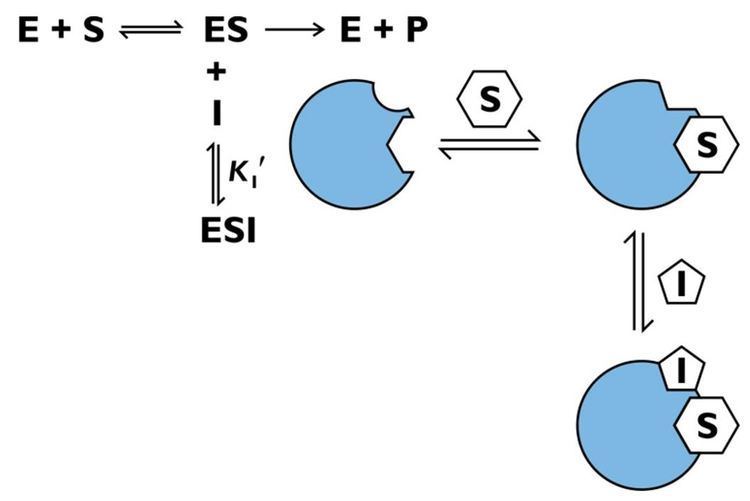Enzyme inhibition part 3 of 3 uncompetitive inhibitors
Uncompetitive inhibition, also known as anti-competitive inhibition, takes place when an enzyme inhibitor binds only to the complex formed between the enzyme and the substrate (the E-S complex).
Contents

While uncompetitive inhibition requires that an enzyme-substrate complex must be formed, non-competitive inhibition can occur with or without the substrate present.

Mechanism
This reduction in the effective concentration of the E-S complex increases the enzyme's apparent affinity for the substrate through Le Chatelier's principle (Km is lowered) and decreases the maximum enzyme activity (Vmax), as it takes longer for the substrate or product to leave the active site. Uncompetitive inhibition works best when substrate concentration is high. An uncompetitive inhibitor need not resemble the substrate of the reaction it is inhibiting.
Mathematical definition
The Lineweaver–Burk equation states that:
Where v is the initial reaction velocity, Km is the Michaelis–Menten constant, Vmax is the maximum reaction velocity, and [S] is the concentration of the substrate.
The Lineweaver–Burk plot for an uncompetitive inhibitor produces a line parallel to the original enzyme-substrate plot, but with a higher y-intercept, due to the presence of an inhibition term
Where [I] is the concentration of the inhibitor and Ki is an inhibition constant characteristic of the inhibitor.
